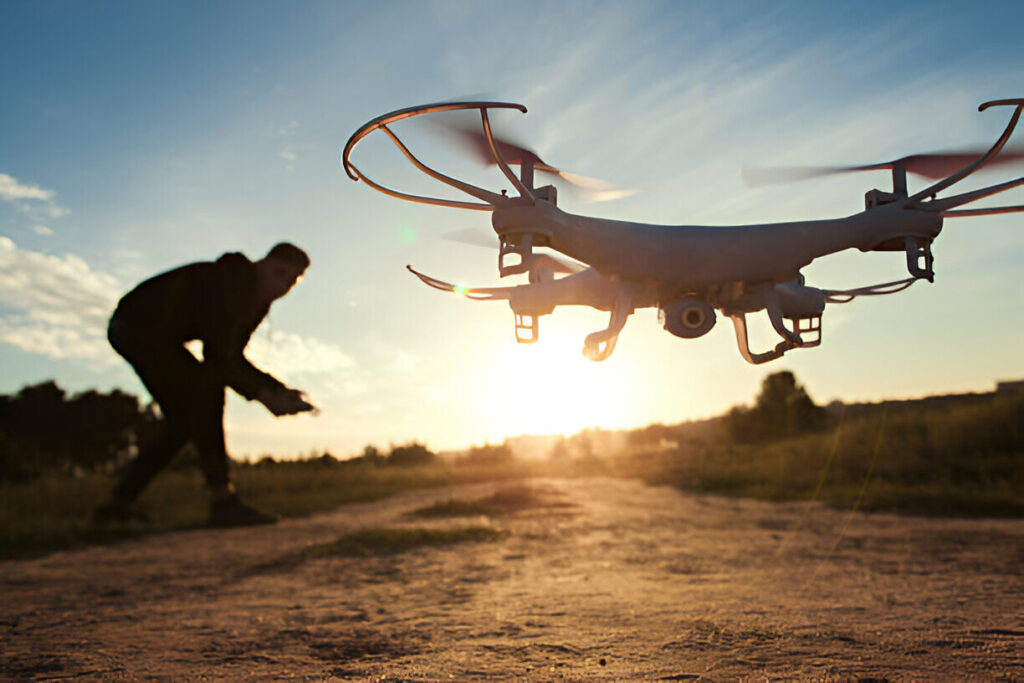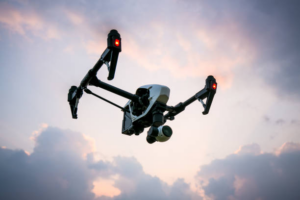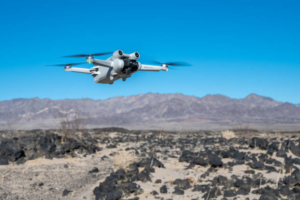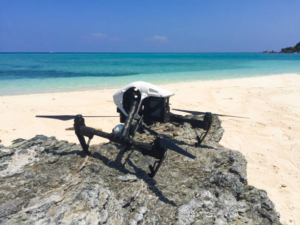Home > Travel Photography Redefined: DJI Cameras as Essential Gear for Adventurers

Capturing the spirit of a trip through travel photography has progressed from taking quick photos to creating rich, detailed narratives. Here come DJI cameras, the trailblazers who are revolutionizing this form. These innovative devices have become essential for travelers and wanderlust-driven individuals. Known for leading the way in drone technology, DJI now provides a range of small, flexible, and high-performing cameras designed with travelers in mind. The little Osmo Pocket is ideal for impromptu vlogging, while the Mavic series captures amazing aerial photos. DJI cameras guarantee that every moment is captured in exquisite detail.
These cameras are meant to capture experiences rather than just pictures. Thanks to their sophisticated stabilization, high-resolution features, and user-friendly interfaces, both amateur and experienced photographers can utilize them. DJI cameras are unmatched in terms of quality and versatility, whether you are flying over wavy beaches, visiting busy cities, or hiking through deep forests.
They are also the perfect travel companions because of their sturdy construction, which guarantees durability even in the most demanding circumstances. With each click and flight, DJI leads the evolution of trip photography, enabling travelers to rethink the way they capture their experiences and turn passing moments into priceless memories.

Over the years, there have been substantial changes in travel photography. Photographers used to rely on bulky, manually operated film cameras that demanded a great deal of skill and preparation. Due to the high cost of film and development, the procedure was labor-intensive and costly, and the number of shots could not be increased. Compact cameras, made possible by the digital revolution, allowed photographers to capture hundreds of photos and instantly examine and edit them, greatly enhancing both the ease of use and quality of trip photography. The latest innovation in the industry is the advent of DJI drones, which have completely changed it by providing amazing aerial pictures and angles never before possible.
In the beginning, travel photographers had to use bulky, manually operated cameras, which took a great deal of expertise and accuracy. It was a labor-intensive procedure that required precise exposure settings, manual focus adjustments, and cautious film roll loading. The numerous lenses, tripods, and rolls of film that photographers frequently had to carry added to the weight of their equipment. Photographers had to develop their film in darkrooms or mail it to labs, and the procedure was similarly rigorous. They would frequently have to wait days or weeks to see the results. Since the film was expensive and scarce, every shot mattered. This limitation encouraged a methodical technique in which every shot was well thought out and composed before the shutter was released.
Digital cameras changed the travel photography game, bringing in a time of unheard convenience and inventiveness. Now that film no longer had the restrictions and expenses attached to it, photographers could capture thousands of images. Quick edits made possible by instant input from image previews greatly improved the composition and quality of the shots. Large picture collections were also simpler to handle and arrange, thanks to digital storage devices like memory cards and portable drives. This change made photography more accessible and allowed more people to document and share their travelogues. The digital revolution made Advanced editing software possible, which also helped photographers enhance their photos and produce breathtaking visual storytelling.

In recent years, the biggest development in travel photography has been the arrival of drones. Thanks to DJI, a pioneer in drone technology, photographers can now take pictures and movies from previously unimaginable angles. With the help of drones, photographers can now showcase the world from above, creating new creative opportunities. Drones have revolutionized how travel photographers capture their journeys, whether it is the delicate patterns of Bali’s rice terraces, Namibia’s vast deserts, or the architectural wonders of old cities. With the arrival of this new era, travel photography can now have amazing aerial shots that give a new narrative style, depth, and drama.
DJI stands for Da-Jiang Innovations and is now widely recognized for producing high-caliber drones and camera systems. Travel photographers love their devices because of their cutting-edge features, dependability, and simplicity of use. Photographers can now create breathtaking aerial photos and films that were previously impossible because of DJI’s cutting-edge technology. For travelers on the go requiring portable cameras, their small and lightweight designs, such as the DJI Mini 2, offer ease. With their sophisticated flight modes and superior image capabilities, DJI’s drones provide photographers with cutting-edge equipment to explore their creative limits and capture their travels from unusual angles.

One of DJI’s greatest contributions to travel photography is producing breathtaking aerial photos. Advanced camera systems on drones like the DJI Mavic Air 2 and DJI Phantom 4 Pro allow users to take 4K films and high-resolution pictures from the air. Thanks to this aerial viewpoint, photographers may display landscapes, towns, and natural wonders in a way that is simply impossible with ground-based photography.
Aerial photography offers a distinctive viewpoint that may turn commonplace situations into remarkable pictures. When a beach is viewed from above, for instance, detailed patterns in the sand and water become visible that are not apparent from the ground. Similarly, aerial photographs of cities bring the interplay of urban structures and the architectural plan to life.
Travel photographers frequently encounter the difficulty of transporting heavy adventure gear while visiting isolated areas. In response to this problem, DJI has created small, lightweight drones. For example, the DJI Mini 2 weighs less than 250 grams and is small enough to carry in a backpack. Its remarkable camera skills and compact size make it the perfect travel companion for adventurers.
Advanced features that improve photography are included with DJI drones. Photographers may automate difficult shots using intelligent flight modes like ActiveTrack, Point of Interest, and Waypoints, guaranteeing smooth, polished footage. By lowering the requirement for manual control, these features free up photographers to concentrate on composition and originality.
With ActiveTrack, the drone can automatically follow an object in the frame and avoid obstructions. This feature is very helpful for taking pictures of dynamic scenes, such as a bicycle travelling along a picturesque path or a hiker making their way through a forest.
Using the Point of Interest mode, the drone can circle around a subject and maintain it in the center of the picture. This is perfect for photographing famous sites or natural formations since it offers a wide perspective that emphasizes the subject’s importance in relation to its surroundings.
With the Waypoints mode, photographers can pre-program the drone’s flying path, allowing it to take many pictures along a predetermined path. This is particularly helpful for making time-lapse movies or recording how a landscape changes over time.
High-quality sensors and lenses used in DJI cameras enable them to capture crisp, colorful photos. For instance, the DJI Mavic 3 has a huge 4/3 CMOS sensor Hasselblad camera that can record 5.1K video and take 20-megapixel still images. The bigger sensor size improves dynamic range and low-light performance, producing beautiful photos even in difficult lighting situations.
A number of DJI cameras support RAW format photography, giving photographers more creative control over post-processing. When it comes to making substantial adjustments to exposure, color, and contrast without sacrificing image quality, RAW files are superior to JPEGs in that they retain more image data.
DJI cameras can be enhanced with extra features like HDR (High Dynamic Range) and Panorama modes. By combining several exposures, the HDR mode captures information in both highlights and shadows to produce photos with a wider dynamic range. Wide-angle or spherical photographs are produced by stitching together many shots in the panorama mode, which is ideal for capturing expansive landscapes.
Travel photographers worldwide have used DJI cameras and drones to produce amazing photos and films. These are a few instances of how explorers have revolutionized their travel photography with DJI technology.
Travel photographers have discovered that DJI drones are incredibly useful equipment for exploring far-flung and unreachable locations. Photographer Chris Burkard, for example, utilized a DJI drone to get breathtaking aerial photos of Iceland’s landscape. Thanks to the drone, he captured the immense vistas and complex designs created by glaciers, rivers, and volcanic features on camera.
Additionally, cultural heritage places have been documented with DJI cameras from unusual angles. Photographer Elia Locardi used a DJI drone to take pictures from above of Myanmar’s historic monasteries. The resulting photos offered a new angle on these ancient locations by showcasing the temples’ exquisite architecture and seamless integration with the surrounding environment.
DJI drones have helped wildlife photographers by enabling them to picture animals in their native environments without upsetting them. Photographer Florian Ledoux documented polar bears in the Arctic with a DJI drone. Thanks to the drone’s silent operation and high-altitude capability, he was able to take close-up pictures of the bears and their surroundings, which helped spread awareness of how climate change is affecting these magnificent animals.
Adventure sports fans use DJI cameras to record their adventures in stunning ways. For instance, professional snowboarder Travis Rice, using a DJI drone, filmed his descent from an isolated Alaskan mountain. Viewers had an immersive experience as the aerial footage brought to light the enormity of the terrain and the competence needed to navigate such difficult terrain.
Consider the following tips if you want to get the most out of your DJI cameras and drones
Using DJI cameras for trip photography requires careful planning. Do your homework on where to go, when to go there for the best lighting, and whether you need permission to fly a drone.
Every country and area has different drone laws, so it’s critical to learn about the guidelines and limitations before traveling there. Ensure you abide by all applicable local rules when using drones, especially those pertaining to privacy, no-fly zones, and height restrictions.
Prior to your travel, spend some time learning how to use your DJI camera and drone. To learn the impact of different camera settings on your photographs, practice flying in open locations and try out different settings. Learn about the various intelligent flight modes and experiment with them to get dynamic photos.
Prioritizing safety above everything else is crucial while operating drones. Keep your drone in line of sight at all times, avoid flying in bad weather, and be aware of potential hazards like power wires and trees. Additionally, avoid flights that can disrupt wildlife or other people out of consideration for them.
Post-processing is an essential phase in travel photography. To achieve the desired look, adjust the exposure, color balance, and sharpness of your photos and movies using editing software. Use RAW files’ versatility to conduct in-depth modifications and enhance the quality of your images.
Travel photography has been transformed by DJI cameras and drones, which offer travelers cutting-edge equipment to produce breathtaking photos and films from unusual angles. The power of aerial photography, cutting-edge features, and excellent image quality have completely changed how photographers record their travels. By utilizing DJI technology, travel photographers can now share the world’s beauty and explore creative limits in ways never thought possible. DJI cameras have become a necessary piece of equipment for those who want to use their cameras to document cultural heritage, explore distant areas, or photograph wildlife in its natural habitat. If you are looking for DJI cameras in Pakistan, Golden Camera is your one-stop shop for all DJI cameras.
Monday – Saturday:
11:30 AM – 9pm
Copyright © 2025. All Rights Reserved.
Website Powered By DABBS Solutions Pvt. Ltd.
Social Chat is free, download and try it now here!